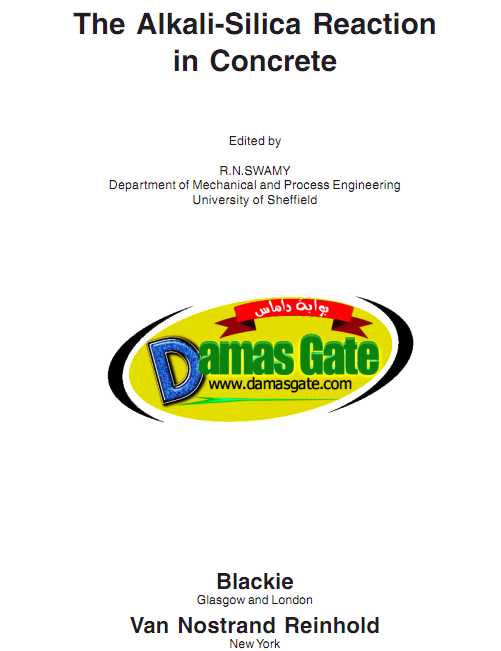The Alkali-Silica Reaction in Concrete

1.2 Alkali-aggregate reactions in concrete
The expansion, deterioration and perhaps even failure of concrete structural
elements resulting from alkali-aggregate reaction in the concrete are due to
swelling pressures developing as a result of the reactivity within the fabric of
the concrete which are sufficient to produce and propagate microfractures. In
general terms these reactions involve chemical interaction between alkali
hydroxides which are usually (but not always) derived from the cement used in
the concrete and reactive components in the aggregate particles used.
Detailed research studies have shown that there are a number of different
materials which produce chemical interactions in concrete which can be described
as alkali-aggregate reactivity. One of these is alkali-carbonate reactivity, which is
quite distinct from the alkali-silica reaction and was first described by Swenson
in 1957. He described sections of concrete pavement in Kingston, Ontario, as
exhibiting excessive expansion which closed the joints and produced cracking of
the slabs within 6 months of placing. The cracks defined roughly hexagonal areas
50–100 mm across and extended deeply into the concrete. Since these original
observations other cases of alkali-carbonate reactivity in concretes have been
reported from many parts of the world. These include areas in the USA reported by
Newlon and Sherwood 12 , Axon and Lind 13 , Welp and De Young and
others, Iraq, reported by Alsinawi and Murad 16 , Bahrain by Hussen and in Canada
by Rogers . Various types of alkali-carbonate reaction have also been reported,
though not all of them appear to be expansive or deleterious. They may be classified
into the following broad groups principally according to the type of reaction rim
or reaction products they produce.
Download
http://s18.alxa.net/s18/srvs2/02/002...n.Concrete.rar